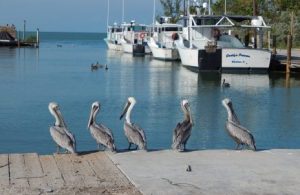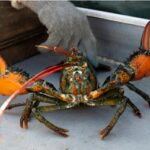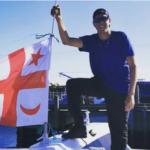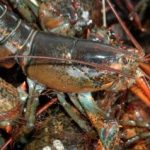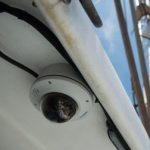Tag Archives: 2 Offshore Wind farms
Feds & NJ Rushed Offshore Wind – Now It’s Falling Apart! Court Ruling Highlights Oversight Deficiencies!
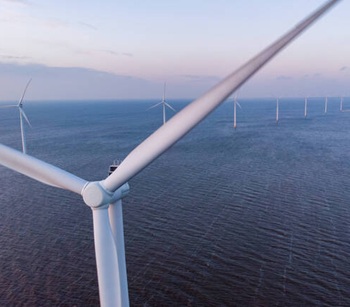 After nine months of covering offshore wind energy developments along the Jersey Coast, three glaring issues have emerged over that time—each fueling opposition to the federal and state-backed offshore wind plan: lack of due diligence, rushed approvals, and the bigger is better mentality. Governor Murphy encapsulated this ambition, declaring, “Welcome to NJ, the Nation’s Center of Offshore Wind.” But with mounting setbacks—including a recent court ruling revoking a critical permit—the cracks in this fast-tracked initiative are becoming impossible to ignore. The future of offshore wind development in New Jersey has been dealt yet another significant blow following a recent ruling from the Environmental Appeals Board. On March 14, the board decided to revoke the Clean Air Act permit for the Atlantic Shores wind turbine project, a move that U.S. Representative Chris Smith (R-NJ) described as “another nail in the coffin” for the initiative. more, >>CLICK TO READ<< 07:15
After nine months of covering offshore wind energy developments along the Jersey Coast, three glaring issues have emerged over that time—each fueling opposition to the federal and state-backed offshore wind plan: lack of due diligence, rushed approvals, and the bigger is better mentality. Governor Murphy encapsulated this ambition, declaring, “Welcome to NJ, the Nation’s Center of Offshore Wind.” But with mounting setbacks—including a recent court ruling revoking a critical permit—the cracks in this fast-tracked initiative are becoming impossible to ignore. The future of offshore wind development in New Jersey has been dealt yet another significant blow following a recent ruling from the Environmental Appeals Board. On March 14, the board decided to revoke the Clean Air Act permit for the Atlantic Shores wind turbine project, a move that U.S. Representative Chris Smith (R-NJ) described as “another nail in the coffin” for the initiative. more, >>CLICK TO READ<< 07:15

Offshore wind will not be allowed on Georges Bank – New moratorium is a response to calls from the fishing industry
Ottawa and Nova Scotia say they will not allow offshore wind developers to place turbines on Georges Bank, a lucrative fishing ground that is already protected from offshore petroleum development. Nova Scotia Energy Minister Trevor Boudreau says Georges Bank will be protected with a 10-year moratorium that can be renewed at the end of the term if supported by both governments. “It’s a very lucrative fishing bank, has an incredible resource there that we’re utilizing to its full potential, and this is about saying: that’s where we’re focused on, is that sector in that area,” Boudreau told reporters at Province House. Boudreau and Jonathan Wilkinson, the federal minister of energy and natural resources, announced Thursday that they have directed their joint offshore energy regulator to apply the moratorium. more, >>CLICK TO READ<< 18:29
Ocean City prepares federal lawsuit over offshore wind projects.
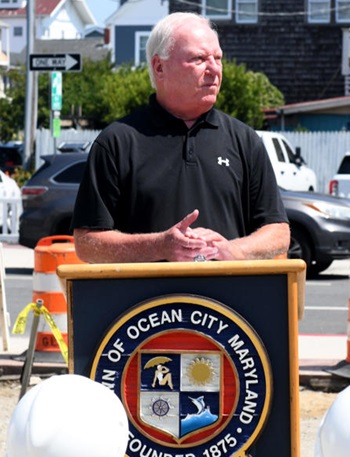 During the most recent normal legislative meeting, Ocean City Mayor Rick Meehan noted he was not surprised members of the municipal government did not have all the details of the proposed offshore wind development by US Wind. He cited the planned 114 turbines would be “between 10.7 to 10.9 miles off our coast. At a minimum they will be 938 feet tall, and that’s three and half times taller than any building in Ocean City. If built on land, they would be the tallest structures in Maryland.” The federal government leased the land on which these turbines are slated to be built according to the company’s federal permit application. “We’ve decided if the (federal) Bureau of Ocean Energy Management provides a favorable Record of Decision on US Wind’s permit application, the Town of Ocean City will file suit against the BOEM,” Meehan said. more, >>CLICK TO READ<< 08:02
During the most recent normal legislative meeting, Ocean City Mayor Rick Meehan noted he was not surprised members of the municipal government did not have all the details of the proposed offshore wind development by US Wind. He cited the planned 114 turbines would be “between 10.7 to 10.9 miles off our coast. At a minimum they will be 938 feet tall, and that’s three and half times taller than any building in Ocean City. If built on land, they would be the tallest structures in Maryland.” The federal government leased the land on which these turbines are slated to be built according to the company’s federal permit application. “We’ve decided if the (federal) Bureau of Ocean Energy Management provides a favorable Record of Decision on US Wind’s permit application, the Town of Ocean City will file suit against the BOEM,” Meehan said. more, >>CLICK TO READ<< 08:02
And they call this “green” energy.
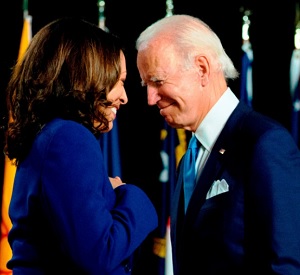 The centerpiece of Biden/Harris “accomplishments” is the 2022 Inflation Reduction Act, which included $369 billion worth of green giveaways/grants, including 30 gigawatts of offshore wind turbines by 2030. Harris plans to spend $10 trillion in public/private funding on green initiatives. So, how is it going? On July 13, a massive blade from a wind turbine nearly as tall as the Eiffel Tower collapsed into the Massachusetts Nantucket Sound for no apparent reason throwing the tourist destination into economic crisis at the height of the summer season. More than six truckloads’ worth of debris was collected, with more still washing up weeks later. Miles of the island’s famous ocean beaches had to be closed for days due to the dangerous debris, yet the media coverage was negligible. more, >>CLICK TO READ<< by Arthur Keller 07:17
The centerpiece of Biden/Harris “accomplishments” is the 2022 Inflation Reduction Act, which included $369 billion worth of green giveaways/grants, including 30 gigawatts of offshore wind turbines by 2030. Harris plans to spend $10 trillion in public/private funding on green initiatives. So, how is it going? On July 13, a massive blade from a wind turbine nearly as tall as the Eiffel Tower collapsed into the Massachusetts Nantucket Sound for no apparent reason throwing the tourist destination into economic crisis at the height of the summer season. More than six truckloads’ worth of debris was collected, with more still washing up weeks later. Miles of the island’s famous ocean beaches had to be closed for days due to the dangerous debris, yet the media coverage was negligible. more, >>CLICK TO READ<< by Arthur Keller 07:17
Offshore wind or tribal rights? Biden’s California dilemma.
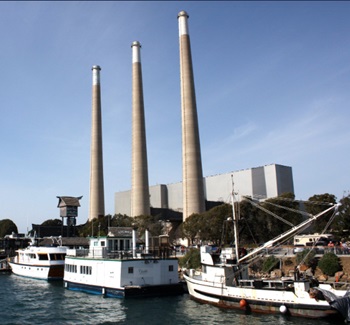 Several offshore wind developers want to build the state’s first farms off the coast here, projects that are needed for California and the White House to reach decarbonization goals. But this summer, the administration is also likely to designate the Chumash Heritage National Marine Sanctuary in coastal waters that surround Morro Bay, a plan that the offshore wind industry says blocks their access to the grid. Equinor, Golden State Wind and Invenergy California Offshore, companies with offshore wind farms planned off the bay, hope to carve out guaranteed paths for their power lines to reach shore, when the NOAA finalizes the sanctuary in coming months. “The ocean should not be the sacrificial lamb for our unquenchable thirst for energy,” said Violet Sage Walker, chair of the Northern Chumash Tribal Council, the Indigenous tibe that proposed the marinre sanctuary to NOAA. more, >>click to read<< 09:29
Several offshore wind developers want to build the state’s first farms off the coast here, projects that are needed for California and the White House to reach decarbonization goals. But this summer, the administration is also likely to designate the Chumash Heritage National Marine Sanctuary in coastal waters that surround Morro Bay, a plan that the offshore wind industry says blocks their access to the grid. Equinor, Golden State Wind and Invenergy California Offshore, companies with offshore wind farms planned off the bay, hope to carve out guaranteed paths for their power lines to reach shore, when the NOAA finalizes the sanctuary in coming months. “The ocean should not be the sacrificial lamb for our unquenchable thirst for energy,” said Violet Sage Walker, chair of the Northern Chumash Tribal Council, the Indigenous tibe that proposed the marinre sanctuary to NOAA. more, >>click to read<< 09:29
Floating offshore wind experts say they want to coexist with Maine lobstermen, but lobstermen say no thanks
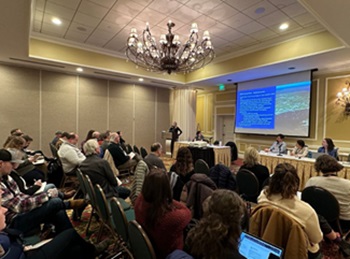 Lobstermen asked pointed questions Thursday about a planned offshore floating wind array that they fear will take away fishing grounds and potentially disrupt the species they rely on to make a living. “Offshore wind overall we have a lot of issues with,” Virginia Olsen, political director of the Maine Lobstering Union said. “We know it will be industrializing our ocean and as fishermen we just don’t want to see that happen.” During the Thursday presentation, state officials and consultants working on the floating array emphasized they want to work toward “coexistence” between the new technology and the fishing industry. But that didn’t sit well with some of the lobstermen, who said they don’t want to co-exist with the turbines. more, >>click to read<< 06:50
Lobstermen asked pointed questions Thursday about a planned offshore floating wind array that they fear will take away fishing grounds and potentially disrupt the species they rely on to make a living. “Offshore wind overall we have a lot of issues with,” Virginia Olsen, political director of the Maine Lobstering Union said. “We know it will be industrializing our ocean and as fishermen we just don’t want to see that happen.” During the Thursday presentation, state officials and consultants working on the floating array emphasized they want to work toward “coexistence” between the new technology and the fishing industry. But that didn’t sit well with some of the lobstermen, who said they don’t want to co-exist with the turbines. more, >>click to read<< 06:50
Oregon fishermen, tribes angered by surprise announcement on offshore wind energy areas
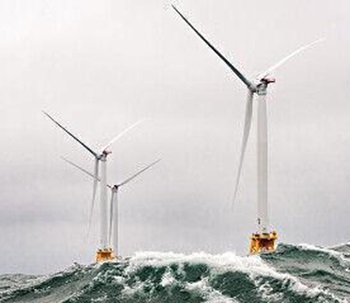 Federal officials say Oregon’s wind energy areas were developed “following extensive engagement and feedback from the state, Tribes, local residents, ocean users, federal government partners, and other members of the public” and are based on reducing conflicts with ocean users, particularly commercial fishermen. The areas avoid 98% of the locations recommended for exclusion due to their importance as commercial fishing grounds, they said. But local groups representing fishermen and Indigenous communities said that narrative is inaccurate and the federal government’s engagement with local communities was perfunctory at best, failing to take into account suggested impacts on local fishing areas, the environment and views that are sacred to tribes. The groups said the announcement caught them by surprise since Gov. Tina Kotek had asked the federal agency last June to pause identifying and leasing offshore wind areas so the state could fully evaluate potential impacts on the environment and economy. more, >>click to read<< 10:07
Federal officials say Oregon’s wind energy areas were developed “following extensive engagement and feedback from the state, Tribes, local residents, ocean users, federal government partners, and other members of the public” and are based on reducing conflicts with ocean users, particularly commercial fishermen. The areas avoid 98% of the locations recommended for exclusion due to their importance as commercial fishing grounds, they said. But local groups representing fishermen and Indigenous communities said that narrative is inaccurate and the federal government’s engagement with local communities was perfunctory at best, failing to take into account suggested impacts on local fishing areas, the environment and views that are sacred to tribes. The groups said the announcement caught them by surprise since Gov. Tina Kotek had asked the federal agency last June to pause identifying and leasing offshore wind areas so the state could fully evaluate potential impacts on the environment and economy. more, >>click to read<< 10:07
Harris: No offshore wind turbines
 Warning of dire consequences if offshore wind industrialization is allowed off Maryland’s Atlantic coast, three legislators called on experts to bolster their call to halt construction of wind turbines off the mid-Atlantic coast. Harris was joined by New Jersey Congressmen Jeff Van Drew (R) and Chris Smith (R). Six experts testified and answered questions from the legislators. whose districts “are directly impacted” by “offshore wind industrialization,” according to news releases issued by the congressmen’s offices. Harris doubted that “the average person would be willing to pay the extra taxes and extra rates in order to develop a source of energy that … is roughly four times as expensive as what your current source of energy is,” he said. “That impacts everyone whether or not you live on the Shore.” 12 photos, more, >>click to read<< 06:55
Warning of dire consequences if offshore wind industrialization is allowed off Maryland’s Atlantic coast, three legislators called on experts to bolster their call to halt construction of wind turbines off the mid-Atlantic coast. Harris was joined by New Jersey Congressmen Jeff Van Drew (R) and Chris Smith (R). Six experts testified and answered questions from the legislators. whose districts “are directly impacted” by “offshore wind industrialization,” according to news releases issued by the congressmen’s offices. Harris doubted that “the average person would be willing to pay the extra taxes and extra rates in order to develop a source of energy that … is roughly four times as expensive as what your current source of energy is,” he said. “That impacts everyone whether or not you live on the Shore.” 12 photos, more, >>click to read<< 06:55
Offshore Wind and the Stress on Commercial Fishermen
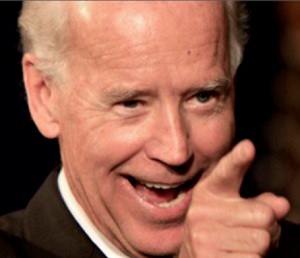 Congressional Republicans are sounding the Mayday alarm this weekend to the grave challenges commercial fishermen face resulting from the Biden administration’s offshore wind agenda. Offshore wind development is placing enormous stress on the American commercial fishing fleet, which may not survive these challenges. A trio of coastal lawmakers, Reps. Andy. Harris (R-Md.), Chris Smith (R.-N.J.), and Jeff Van Drew (R-N.J.) will explore offshore wind farm interactions at an upcoming hearing, which their colleagues and the public should heed. President Joe Biden casts himself as a friend to American workers, but his poor treatment of fishermen and their communities puts the lie to this claim. Biden’s plan to produce 30 GW of offshore wind energy by the year 2030 is based solely on political goals, not any true scientific investigation of our ocean’s offshore ecosystems. The science is unresolved. Coastal economies are forgotten. Energy and food security questions are ignored. And that’s just for starters. more, >>click to read<< 08:16
Congressional Republicans are sounding the Mayday alarm this weekend to the grave challenges commercial fishermen face resulting from the Biden administration’s offshore wind agenda. Offshore wind development is placing enormous stress on the American commercial fishing fleet, which may not survive these challenges. A trio of coastal lawmakers, Reps. Andy. Harris (R-Md.), Chris Smith (R.-N.J.), and Jeff Van Drew (R-N.J.) will explore offshore wind farm interactions at an upcoming hearing, which their colleagues and the public should heed. President Joe Biden casts himself as a friend to American workers, but his poor treatment of fishermen and their communities puts the lie to this claim. Biden’s plan to produce 30 GW of offshore wind energy by the year 2030 is based solely on political goals, not any true scientific investigation of our ocean’s offshore ecosystems. The science is unresolved. Coastal economies are forgotten. Energy and food security questions are ignored. And that’s just for starters. more, >>click to read<< 08:16
Who’s on the take? Hundreds of Millions of Dollars for Mitigation Can Ease Offshore Wind Opponents’ Pain
 Opponents of offshore wind offer different reasons for their position: fear of impacts on the marine ecology; fear of loss of income for fishers; fear of loss of tourism dollars and private property values due to the sight of the turbines on the horizon. The cloudy threat of wind projects off the New England coast comes with a golden — not silver — lining. That gold would arrive in the form of millions of dollars contractually promised to communities by developers in the form of mitigations, sometimes through a mechanism called host community or good neighbor agreements. A brief tally of the “lunchbox” of mitigations — touching on communities and institutions from Long Island, N.Y., to Cape Cod to Nantucket to Portsmouth, R.I. — shows a total of about $282 million in negotiated mitigation payments from 2017 to this month. (see below for details). more, >>click to read<< 09:07
Opponents of offshore wind offer different reasons for their position: fear of impacts on the marine ecology; fear of loss of income for fishers; fear of loss of tourism dollars and private property values due to the sight of the turbines on the horizon. The cloudy threat of wind projects off the New England coast comes with a golden — not silver — lining. That gold would arrive in the form of millions of dollars contractually promised to communities by developers in the form of mitigations, sometimes through a mechanism called host community or good neighbor agreements. A brief tally of the “lunchbox” of mitigations — touching on communities and institutions from Long Island, N.Y., to Cape Cod to Nantucket to Portsmouth, R.I. — shows a total of about $282 million in negotiated mitigation payments from 2017 to this month. (see below for details). more, >>click to read<< 09:07
New Jersey Approves Two Major Offshore Wind Projects
 The approvals were part of the state’s third solicitation for offshore wind power as it aims to achieve approximately 11,000 MW of offshore wind power by 2040. The developments are expected to bring significant economic benefits for New Jersey and establish it as a key player in the offshore wind supply chain. New Jersey’s offshore wind development strategy aims to secure the best overall value for ratepayers while safeguarding the environment and commercial and recreational fishing interests. As part of their commitment, the awarded projects will provide over $60 million for environmental and fisheries research, monitoring, and conservation efforts. The approvals come as the offshore wind industry faces challenges from soaring costs, high interest rates and supply chain bottlenecks that have forced some projects to developers to pivot their plans or cancel projects altogether. “Governor Murphy’s leadership is positioning New Jersey as a significant hub for offshore wind development,” said Said Anne Reynolds, Vice President for offshore wind at the American Clean Power Association. More, >>click to read<< 10:45
The approvals were part of the state’s third solicitation for offshore wind power as it aims to achieve approximately 11,000 MW of offshore wind power by 2040. The developments are expected to bring significant economic benefits for New Jersey and establish it as a key player in the offshore wind supply chain. New Jersey’s offshore wind development strategy aims to secure the best overall value for ratepayers while safeguarding the environment and commercial and recreational fishing interests. As part of their commitment, the awarded projects will provide over $60 million for environmental and fisheries research, monitoring, and conservation efforts. The approvals come as the offshore wind industry faces challenges from soaring costs, high interest rates and supply chain bottlenecks that have forced some projects to developers to pivot their plans or cancel projects altogether. “Governor Murphy’s leadership is positioning New Jersey as a significant hub for offshore wind development,” said Said Anne Reynolds, Vice President for offshore wind at the American Clean Power Association. More, >>click to read<< 10:45


































